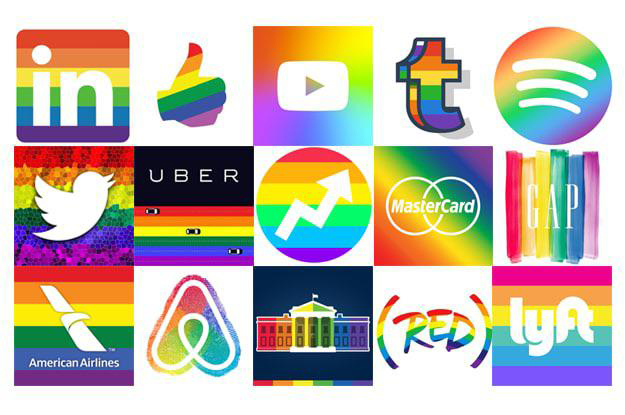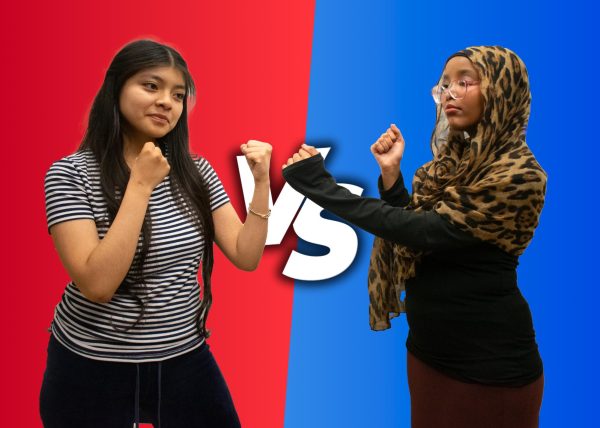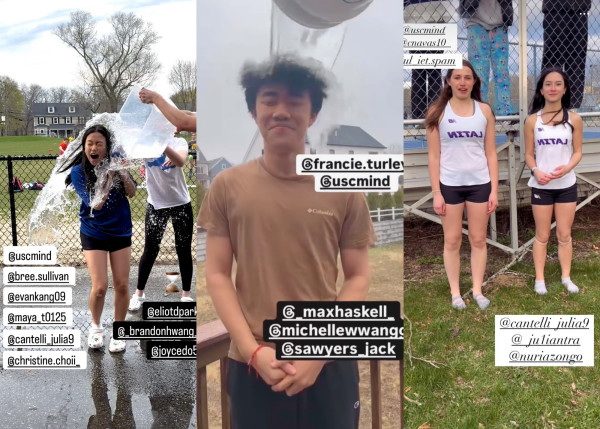Reject Rainbow Capitalism
As the clock strikes midnight on June 1, companies rush to change their social media covers to match the colors of the LGBTQ+ pride flag. They update their websites and in-store displays, covering them in splashes of color and queer slogans, which inevitably disappear on July 1. In the 52 years since the first Pride was held to honor the anniversary of the Stonewall riots, performative corporate activism has become central to its celebration. Pride has grown into a massive for-profit event, shifting further and further away from its roots.
Pride was created for the LGBTQ+ community to come together and celebrate their identities. It is an important part of making queer people, young and old, feel comfortable and represented. Maia Frost (II) explains, “The feeling of support and love and acceptance that comes with going to a pride parade makes all of the questioning, fear and anger feel so much less intense.”
A cornerstone of Pride Month, however, has become the commodification of identities into merchandise, ranging from shirts, to shoes, to pins and everything in between. Then on July 1, the pride display vanishes. Yet, queer visibilty should be a priority for brands year-round. “It’s a terrible feeling to see a queer couple laughing with each other on a commercial on June 7 and never again for the rest of the year. It’s like we’ve disappeared.” says Frost.
Moreover, the designs for pride are often loud and outlandish. While these can be fun, this portrayal is not ideal for many who are in unsafe situations or might want to express their queerness more subtly. Pride merch often also plays into unhealthy stereotypes of the community, spotlighting white gay men instead of the many identities, such as Black transgender women, who were central to the founding of Pride. One student (III) describes how pride “seeks to appease heterosexual society,” and explains that this “allows big brands and companies to feel comfortable enough to stick on a rainbow and profit off of pride.”
Many large corporations only support LGBTQ+ people on a superficial level, selling merchandise while actively donating to politicians who support anti-queer and anti-trans legislation. Take Disney, for instance, which sells and advertises its pride merchandise while simultaneously donating over 300,000 dollars in the past two years to politicians who backed Florida’s “Parental Rights in Education Act,” more commonly known as the “Don’t Say Gay” bill.
The “Don’t Say Gay” bill dictates that “classroom instruction by school personnel or third parties on sexual orientation or gender identity may not occur in kindergarten through grade three or in a manner that is not age-appropriate or developmentally appropriate for students in accordance with state standards,” drastically reversing years of progress in LGBTQ+ education.
Many large media companies such as Disney also refuse to invest in queer storytelling in their productions. The only LGBTQ+ representation is often in blink-and-you-miss-it background moments, which are aired in advertisements to capitalize on the scare representation that Disney does publicize.
Visibility is incredibly important for queer youth, people still figuring out their identities and those in unsafe situations. Selling pride-themed merchandise is an important way to promote LGBTQ+ visibility. When done right, normalized queer identity should be backed with action, such as donating revenue to LGBTQ+ charities and organizations whose services, resources and advocacy are essential to the queer community.
Pride has become increasingly performative and profit-focused, shifting away from its origin of social rebellion and celebration of identity, and therefore losing much of its core significance. We need to make an effort to recognize our roots of lifting each other up without relying on massive corporations and superficial support.
Frost reflects, “A month is good to raise awareness and remind people that not everyone is white and straight and cis, but there shouldn’t need to be a month. We should be learning about all of these things all year [long].”







